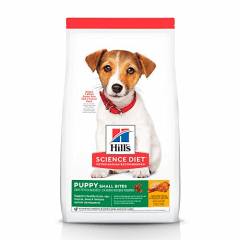The best dog food brands to consider for a healthy and balanced diet
We consulted experts to help you navigate the many dog food options out there, including organic, natural, canned and grain-free.

Being a pet parent comes with its fair share of responsibilities, including providing a comfy dog bed (that is, if you don’t let them sleep in your own), entertaining them with toys and, most importantly, feeding them a nutritious diet. Ensuring your dog has the right food (and balancing it with their favorite dog treats) can offer multiple health benefits, including weight management and maintaining a healthy immune system, according to experts.
“Commercially processed canned or kibble foods are formulated to meet dogs’ nutritional needs for proteins, fats, carbohydrates, vitamins and minerals — they’re convenient, consistent and readily available, and they undergo a process of quality control and inspection that is meant to catch any contaminants or pathogens before they affect pets or people,” says Dr. Lori Teller, a board-certified veterinarian and immediate past president of the American Veterinary Medical Association.
To help you in your search, I consulted veterinarians and animal nutrition experts on what to consider when shopping for the best dog food. Below, I compiled expert-recommended dog food brands to consider, as well as options NBC Select staffers feed their own pets.
SKIP AHEAD How we picked the best dog food | Best dog food | How to determine the best food for your dog
How we picked the best dog food
When choosing the right food for your dog, our experts recommend considering the following factors:
- AAFCO nutrition standards: Ensure the dog food meets AAFCO nutrition standards, which you can determine by looking at the nutritional adequacy statement on the label that will note the food is “complete and balanced.” All of the dog foods we list — including dry kibble and canned wet food — meet or exceed the Association of American Feed Control Officials (AAFCO) nutritional standards.
- Ingredients and palatability: All of the following dog foods come from brands with a team of veterinary nutritionists on staff to regulate the use of high-quality ingredients (more on specific ingredients and formulas below). The ingredient list on the packaging displays all ingredients from highest to least amount by weight, which means the first three listed are the most crucial to consider, according to AAFCO.
- Nutritional value and proportions: Make sure brands provide a feeding guide on its packaging to help you determine the appropriate portions for your dog’s weight and size.
- Your dog’s size, weight and life stage: For example, you should feed your puppy food that’s specifically labeled for puppies until they reach their adult body weight. Some dog foods are labeled by size, like small, medium and large breeds, which means the size of the kibble is easier for them to ingest. Some brands like Royal Canin also offer breed-specific formulas, which can help address common needs and concerns for certain dog breeds. All of the following brands offer high-calorie options for puppies and easily digestible kibble sizes for dogs of various sizes.
Best dog food in 2024
We compiled the best dog foods to consider that are in line with our experts’ guidance. We also listed options that NBC Select staffers feed their own dogs.
Best overall dry dog food: Royal Canin Small Breed Adult Dry Dog Food
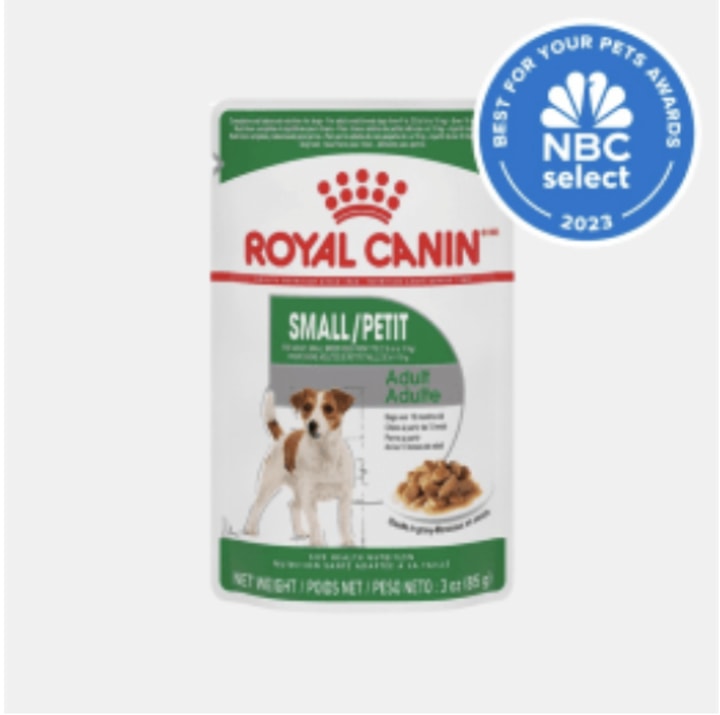
Royal Canin Small Breed Adult Dry Dog Food
Royal Canin offers some of the most diverse dog food options on the market — the brand makes both dry and wet dog food for a variety of dog sizes, breeds and dietary restrictions, including food sensitivities and gastrointestinal issues. I feed my 6-year-old havachon, Bella, Royal Canin’s small-breed dry dog food after my veterinarian recommended it. The small-breed kibble is made for small dogs 10 months to 8 years old that weigh between nine pounds and 22 pounds.
NBC Select manager of editorial operations Shari Uyehara also feeds her dog Loki, a 2-year-old cavalier King Charles spaniel, the same formula after it was recommended by Loki’s breeder. I’ve noticed that Bella prefers this brand over others, which she would often leave half-eaten. Royal Canin also offers its dry food formula for medium and large breeds, as well as a puppy formula.
Best subscription dog food: The Farmer’s Dog Subscription Dog Food
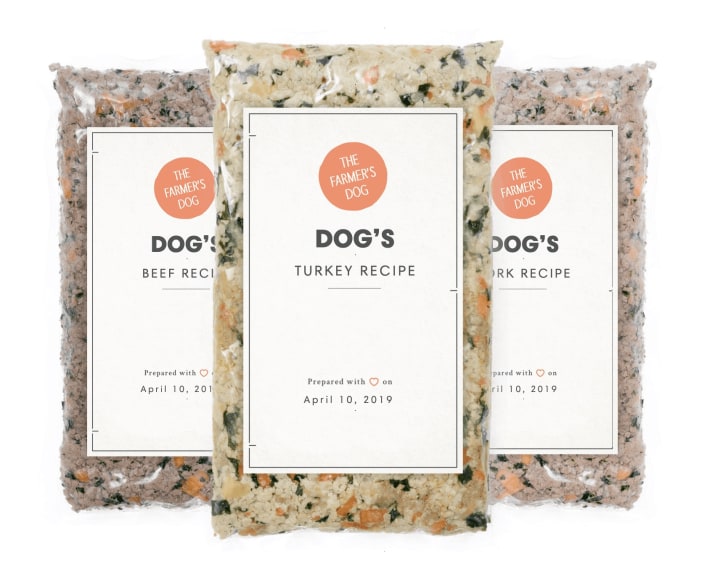
The Farmer’s Dog Subscription Dog Food
Price is based on $2 per day for 14 days. The brand offers 20% off your first box.
The Farmer’s Dog is a subscription plan that delivers fresh human-grade dog food to your door. You can store the food pouches in your fridge or freezer, and each package lasts up to four days in the fridge after being thawed, according to the brand. NBC Select social editor Sadhana Daruvuri feeds The Farmer’s Dog to her 2-year-old Maltipoo, Bandit: “I knew friends who tried it, and their dogs were all big fans, so I did a trial with Bandit and it was obvious he liked it way more than his kibble,” she says. Subscription prices start at $2 per day and delivery options range from one week to two months of food (plan pricing varies based on your dog’s weight, breed, activity level and more).
Best dog food for puppies: Hill’s Science Diet Puppy Small Bites Dry Dog Food

Hill’s Science Diet Puppy Small Bites Dry Dog Food
Hill’s Science Diet’s puppy food is made for dogs up to 1 year old and comes in small, easy-to-digest kibble, according to the brand. The formula has natural omega-3 fatty acids from fish oil that work to support healthy brain and eye development, as well as a vitamin E and vitamin C blend that helps support a healthy immune system in puppies, according to Hill’s. The food comes in a 4.5- or 12.5-pound bag, and the brand also offers a canned puppy formula, which our experts say can be great to mix into your dog’s dry food.
Best dry dog food for sensitive stomachs: Purina Pro Plan Adult Sensitive Skin & Stomach Dry Dog Food
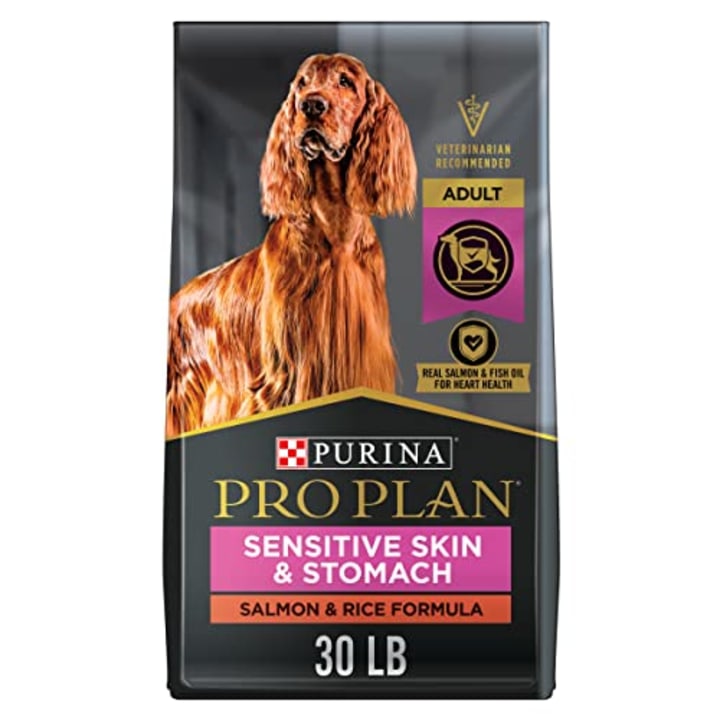
Purina Pro Plan Adult Sensitive Skin & Stomach Dry Dog Food
Some dogs are sensitive to certain food ingredients, which can cause excessive itching, loose stools, occasional vomiting and other symptoms. Investing in a dog food formulated for dogs with sensitive stomachs and skin can help minimize these issues. This option from Purina is crafted without corn, wheat or soy to make it more easily digestible for dogs with an intolerance to these ingredients. However, these types of ingredients should only be avoided if your dog has an intolerance because they are full of healthy vitamins, minerals and carbohydrates, experts told us. To help your dog maintain a complete and balanced diet, the formula contains high-protein salmon, probiotics and prebiotic fiber for digestive and immune health and omega-6 fatty acids to help support a healthy skin and coat, according to the brand.
Best dog food for large breeds: Purina Pro Plan Large Breed Adult Dry Dog Food
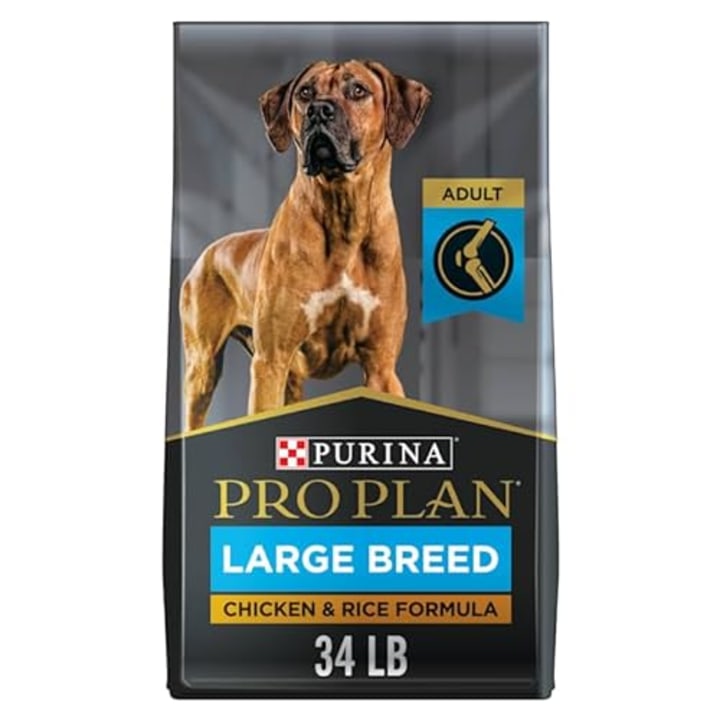
Purina Pro Plan Adult Large Dry Dog Food
Purina employs several veterinary nutritionists to help determine healthy formulations and ingredients. The brand’s highly rated Pro Plan dog food is geared toward dogs of different sizes and in all stages of life, including large-breed adults and puppies, according to the brand. The Purina Pro Plan formula has natural prebiotic fiber for digestive health, and omega-6 fatty acids and vitamin A for skin and coat health, according to the brand. NBC Select associate updates editor Zoe Malin says her large 100-pound yellow lab Chance eats the weight-management dry kibble from the brand, which has a more optimized protein-to-fat ratio, because he’s 10 years old and less active.
Best frozen dog food: Just Food For Dogs Fish & Sweet Potato

Just Food For Dogs Fish & Sweet Potato
Just Food For Dogs offers pouches of high protein food with a low calorie count, so it can be beneficial for dogs who may be overweight or don’t get regular exercise, according to the brand. It offers a variety of meal options that are made up of locally sourced produce and have only one source of protein for a limited ingredients diet, including venison, lamb and turkey.
This sweet potato and fish option provides a balanced diet for dogs with sensitive stomachs or those in need of a novel protein due to allergies, according to the brand. Just Food for Dogs offers two types of food: Fresh Frozen, which has no preservatives and can be thawed and served, and Pantry Fresh, which is shelf-stable for up to two years and doesn’t require refrigeration, according to the brand. If you’re not sure which dog food to buy, the brand also has a variety pack with recipes like venison and squash, lamb and brown rice, and beef and potato.
Best poultry-free dog food: Merrick Grain Free Real Salmon & Sweet Potato Dry Dog Food
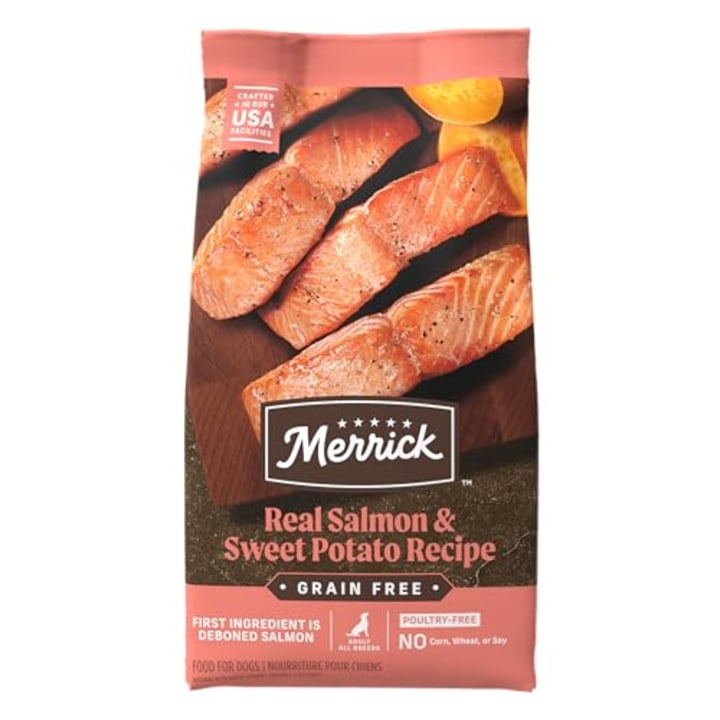
Merrick Grain Free Real Salmon & Sweet Potato Dry Dog Food
This salmon and sweet potato formula is great for dogs with sensitive stomachs or those who experience allergies to certain common proteins. In fact, studies show that proteins like beef and chicken are among the most reported causes of allergies in dogs, so it’s important to look out for common signs of allergies — like excessive itching and vomiting — to figure out what works best for them, says Dr. Joe Wakshlag, professor of clinical nutrition and sports medicine and rehabilitation at Cornell College of Veterinary Medicine. However, most dogs don’t usually experience these types of allergies, so you don’t need to avoid chicken and turkey unless you think your dog may have an allergy or intolerance, says Wakshlag.
Best food for active dogs: Purina Pro Plan Sport Performance Salmon & Cod Dry Dog Food
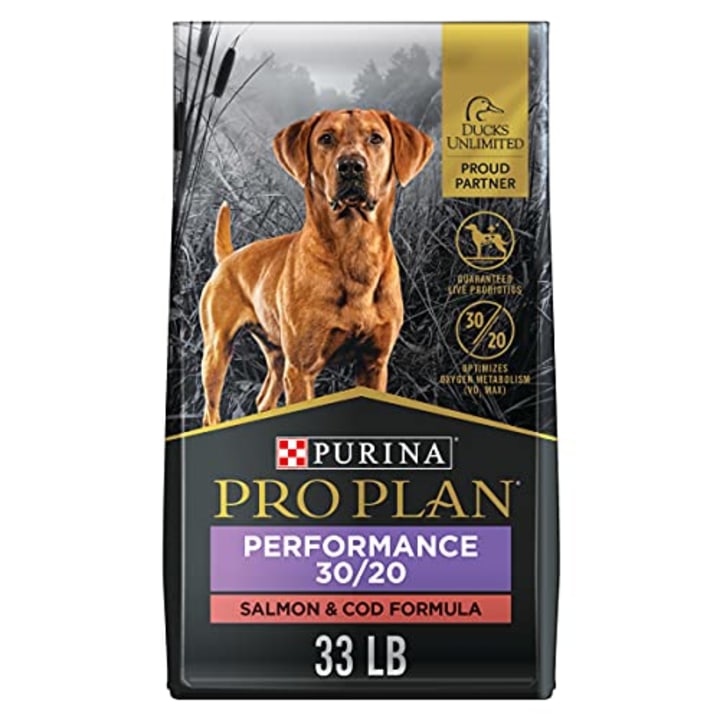
Purina Pro Plan Sport Performance Salmon & Cod Dry Dog Food
NBC Select commerce analytics manager Amanda Smith feeds this Purina Pro Plan formula to her 3-year-old rat terrier Mac, who is a picky eater and found this option more palatable than others. Specifically made for active adult dogs, this dry food has glucosamine and omega-3 fatty acids to help maintain joint health and mobility, according to the brand. It also has a ratio of 30% protein and 20% fat to keep their energy up, according to Purina. This food is available in several flavor combinations to fit your dog’s preferences, including turkey, duck and quail, salmon and cod, and beef and bison formulas.
Best dog food for digestive and joint health: Kirkland Signature Adult Formula Chicken, Rice and Vegetable Dog Food
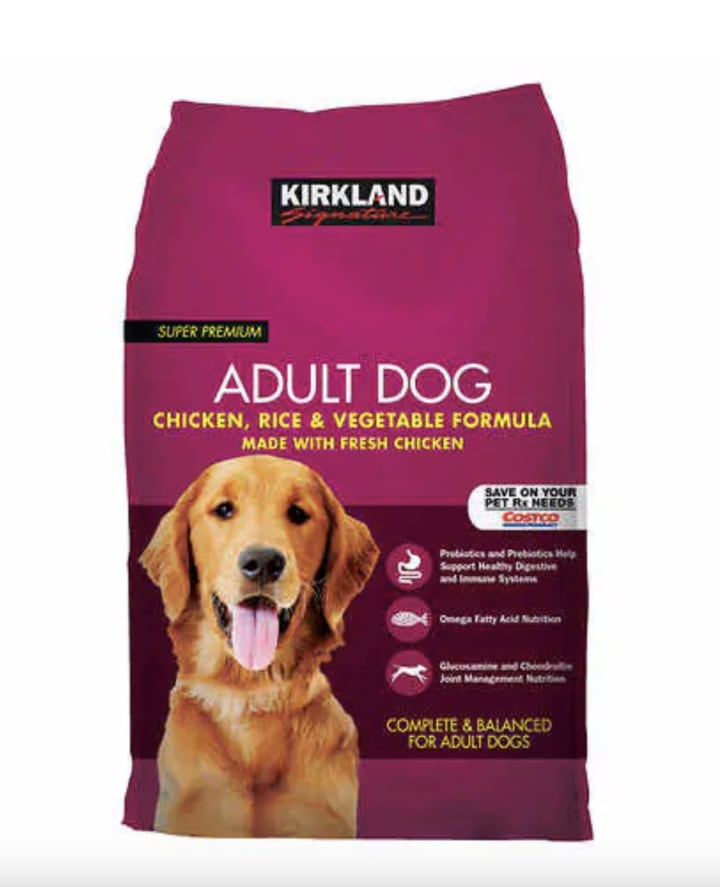
Kirkland Signature Adult Formula Chicken, Rice and Vegetable Dog Food
NBC Select associate reporter Bianca Alvarez feeds her 8-year-old pitbull Baylor this Kirkland Signature dry dog food, which has chicken, whole grain brown rice and vegetables. “Baylor has a really sensitive stomach and this dry food is one of the only ones we found that she can tolerate,” says Alvarez. “We’ve been feeding her this one for years and when we’ve tried to switch it up in the past, she either doesn’t like it or her stomach gets really upset.” The food has probiotics to maintain digestive health, and glucosamine and chondroitin to help support healthy joints, according to the brand.
Best canned wet dog food: Royal Canin Adult Gastrointestinal Canned Dog Food
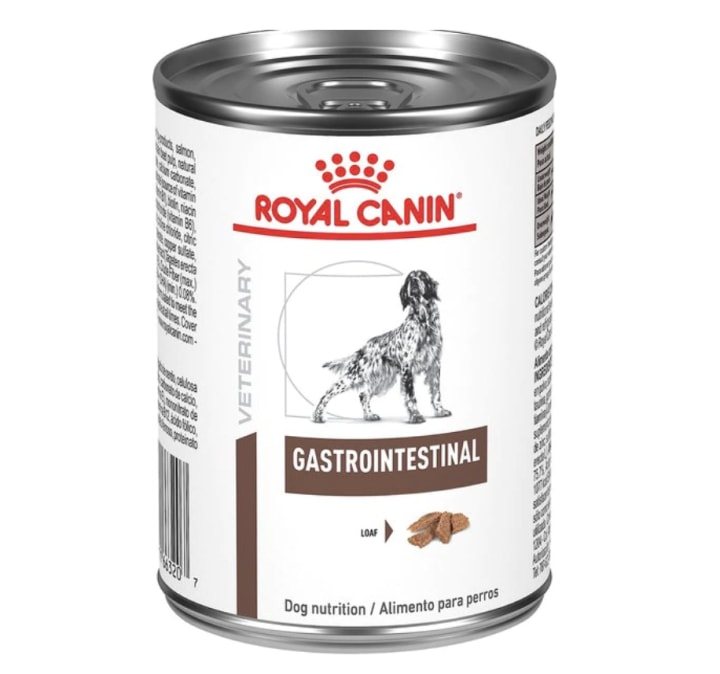
Royal Canin Adult Gastrointestinal Canned Dog Food – 24 Pack
If you prefer to incorporate canned food into your dog’s meals, Royal Canin offers a variety of wet food options tested by veterinary nutritionists that can help you provide them with a little more diversity at dinnertime. Though it’s on the pricier side, this low-fat option can be good for adult dogs with gastrointestinal issues or sensitive stomachs, according to the brand. The formula has prebiotics to help maintain good bacteria in the gut, a blend of dietary fibers that can promote healthy digestion and omega-3 fatty acids from fish oil to help soothe the GI tract, according to Royal Canin.
Best wet food for sensitive stomachs: Hill’s Science Diet Adult Sensitive Stomach & Skin Canned Dog Food

Hill’s Science Diet Adult Sensitive Stomach & Skin Canned Dog Food – 12 Pack
I typically mix my dog Bella’s dry kibble with canned food to add some moisture and texture to her nightly meal. However, since she has a very sensitive stomach, her veterinarian recommended this wet food, and so far it’s one of the only canned foods that hasn’t caused any discomfort or side effects. The turkey and rice stew is Bella’s favorite, but the brand also offers salmon and chicken recipes.
Best prepared wet dog food: Purina Beneful Prepared Meals Beef & Chicken Medley
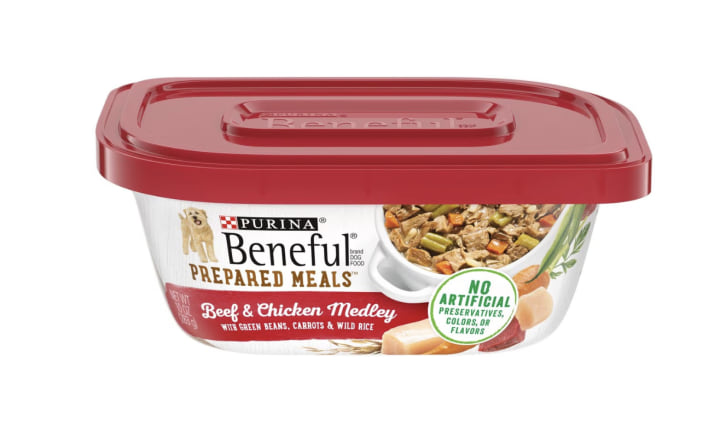
Purina Beneful Prepared Meals Beef & Chicken Medley
As a treat, Smith mixes a scoop of this prepared meal with Mac’s dry food about once a week. The stew comes with veggies, chunks of real beef, real chicken and rice. It’s also a fully balanced meal, so you can serve it on its own as long as you follow your dog’s recommended portion size (you can calculate portions on the brand’s website), or sprinkle it on top of your dog’s favorite kibble.
How to determine the best food for your dog
The two biggest factors that determine whether your dog’s food is good for their health is whether it’s nutritionally complete and balanced and whether you’re giving your dog the right portions based on their size and weight. When selecting your pet’s food, it is important to consider the information on the label and beyond the label.
On the label, the nutrition adequacy — or the AAFCO statement — indicates the species and life stage the food is formulated for and how it’s substantiated, either by formulation or feeding tests. But what isn’t on the label can be equally as important. The Global Nutrition Guidelines set by the World Small Animal Veterinary Association (WSAVA) recommend investigating the brand to determine the people involved in the product’s formulation and manufacturing and whether the company routinely analyzes its finished products for nutrient content, pathogens and other items that don’t belong in dog food.
“Do they have veterinarians on staff or, more specifically, do they have veterinary nutritionists who are board-certified in that field? Brands that provide the best diets also invest in research,” says Dr. Brian Roberts, a board-certified veterinarian and regional medical director in the Mid-Atlantic region with VCA Animal Hospitals.
Below, we highlight some key considerations experts suggest when shopping for high-quality dog food.
Meets AAFCO nutrition standards
Any good dog food will meet the AAFCO nutrition standards, our experts say. “You can determine if a pet food meets your pet’s nutritional needs by looking at the nutritional adequacy statement on the label — if this statement includes the phrase ‘complete and balanced,’ then the product is intended to be fed as a pet’s sole diet and should be nutritionally balanced,” says Roberts.
“We have the AAFCO to make sure that everything you feed [your dog] is nutritionally complete,” says Wakshlag. You should be able to find the statement, which the FDA considers one of the most important aspects of a dog or cat food label, on the back label (in small font).
While AAFCO has feed control officials that develop standards, definitions and policies for the sale and distribution of pet food, among other animal feeds, the voluntary membership association doesn’t regulate, test, approve or certify pet food, so there’s no such thing as an “AAFCO approved” brand or product.
Ingredients and palatability
Finding the best food for your dog is much less about the specific ingredients than you may think. Dog owners should focus on the nutrients their companion is getting from those ingredients instead, says Dr. Richard Hill, a board-certified veterinary nutritionist and associate professor at the University of Florida Department of Small Animal Clinical Sciences.
However, the ingredient list can give you an idea of what nutrients your dog can get from their meal. The AAFCO states that an ingredient list is required to display all ingredients from highest amount to least amount by weight, which means the first three listed are the most critical — this will help you determine if the formula is vegetable-based with things like corn and brown rice or meat-based with chicken, fish or lamb, experts say.
AAFCO has developed several safety standards for ingredients used in pet food, and it goes in depth about common pet food labels.
- Organic food needs to follow production and handling requirements set by the USDA’s National Organic Program, which regulates all organic crops, livestock and agricultural products, to be recognized by the association.
- Human-grade has no real definition in any animal feed regulations because very few pet food products can be officially considered edible by humans, AAFCO says.
- Natural food has to be derived solely from plant, animal or mined sources and cannot be produced by a chemically synthetic process (although ingredients can have trace amounts of chemically synthetic compounds and still be considered natural).
“Some say natural ingredients like whole chicken are better than something processed like chicken meal; however, both are from the same source — chicken meal is just dehydrated chicken,” says Roberts.
Nutritional value and proportions
To make sure you’re giving your dog the appropriate nutrients and proportions, check the food’s energy density — which is shown as kcal (calories) per cup, can or ounce, similar to the nutritional facts on human foods — and its feeding guidelines.
“Generally speaking, commercially prepared brands of dog food have all the essential nutrients that a dog needs for healthy life function,” says Dr. Kristin Michael, a board-certified veterinarian and medical director at VCA Liberty Animal Hospital. “Each specific brand and type of dog food should have clearly labeled feeding amounts for your dog’s ideal weight.”
Once you determine feeding guidelines, you should keep an eye on your pet’s weight with the Body Condition Score, which is a visual scale that evaluates the amount of fat on key parts of the dog’s body (a 4 or 5 score is ideal). Vets use this scale to help gauge a pet’s body condition at each medical appointment and monitor it over the lifespan of a pet, says Michael. “A dog outside of [a healthy] range in either direction could be struggling with a medical issue that needs to be addressed,” she says.
Unfortunately, the top nutritional disease in dogs is obesity and, in some breeds, this can take as much as two years off their lifespan, according to Hill. A lot of obesity problems in dogs come down to the owner’s inability to understand their dog’s calorie intake: “We often pay attention to what’s on the side of the bag, and those recommendations are for the normal, active dog — a lot of dogs aren’t normal and active,” says Wakshlag. (More on dogs and obesity below.)
Your dog’s size, weight and life stage
Generally, your dog’s food should match their life stage. For example, you should feed your puppy food that’s specifically labeled for puppies until they reach their adult body weight — small breeds can switch to adult dog food at seven to nine months, while bigger breeds typically switch at 12 to 14 months, according to the American Kennel Club. “Giant breed dogs can remain on a puppy diet until 1.5 years since they continue to grow for longer than standard sized dogs,” says Michael.
When it comes to the later stages of your dog’s life, if your senior dog is healthy and eating a nutritionally balanced diet, there is no need to change their food, according to Tufts University Cummings School of Veterinary Medicine.
You’ll often see certain dog foods labeled for small, medium and large breeds — these labels mostly deal with the size of the kibble and whether it’s easy for them to ingest. Some brands like Royal Canin offer breed-specific formulas, which can help certain breeds’ needs.
“Manufacturers that follow nutritional science have developed diets with ingredient content for specific classes of breeds who are predisposed to certain problems,” says Roberts. “Many large and giant breeds can develop joint problems in life — some of which are linked to certain ingredients — and diets labeled ‘giant breed’ take this into consideration.”
Be mindful of whether the formulas are actually beneficial or just marketing tactics, and you should double-check the ingredients list and nutritional content to make sure the food is actually serving its purpose for your breed, says Wakshlag.
Meet our experts
At NBC Select, we work with experts who have specialized knowledge and authority based on relevant training and/or experience. We also take steps to ensure that all expert advice and recommendations are made independently and with no undisclosed financial conflicts of interest.
- Dr. Lori Teller is a board-certified veterinarian and the former president of the American Veterinary Medical Association.
- Dr. Joe Wakshlag is a professor of clinical nutrition and sports medicine and rehabilitation at Cornell College of Veterinary Medicine.
- Dr. Brian Roberts is a board-certified veterinarian and regional medical director in the Mid-Atlantic region with VCA Animal Hospitals.
- Dr. Richard Hill is a board-certified veterinary nutritionist and associate professor at the University of Florida Department of Small Animal Clinical Sciences
- Dr. Kristin Michael is a board-certified veterinarian and medical director at VCA Liberty Animal Hospital in Birmingham, Alabama.
Why trust NBC Select?
Mili Godio is an updates editor at NBC Select who has written a variety of dog-related stories, including treats, toys, travel carriers and car safety. For this article, Godio spoke to six veterinarians and veterinary nutritionists about how to shop for dog food and researched dozens of options on the market to recommend the best ones to shop.
Enter to win an iPad from NBC Select. We’re giving away an iPad to one lucky winner who fills out our survey about shopping interests and habits. (NO PURCHASE NECESSARY. Void where prohibited. Legal residents of the 50 US states or DC who are 18 or older. Ends 5/31/24. Limit 1 entry per person.


